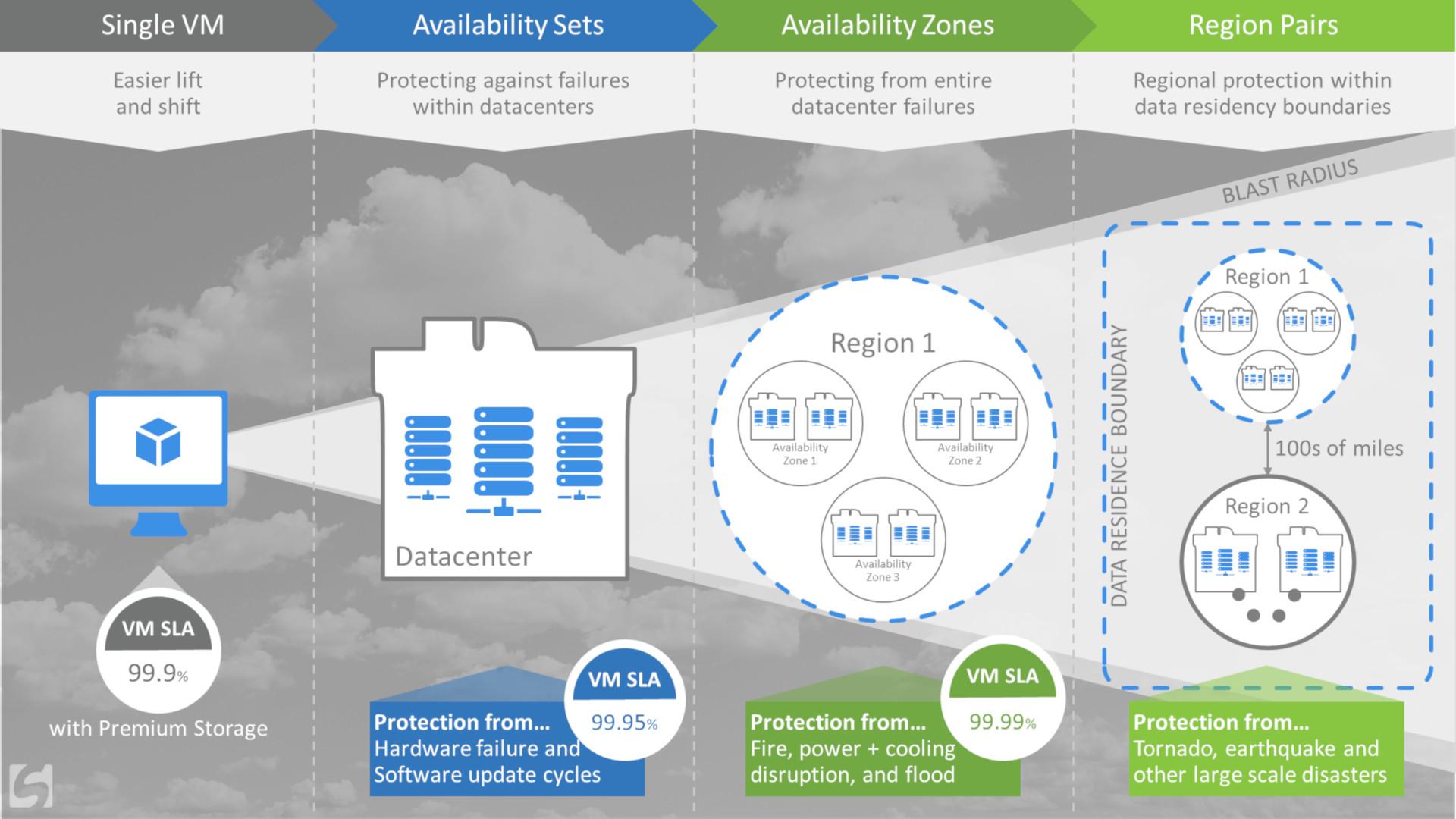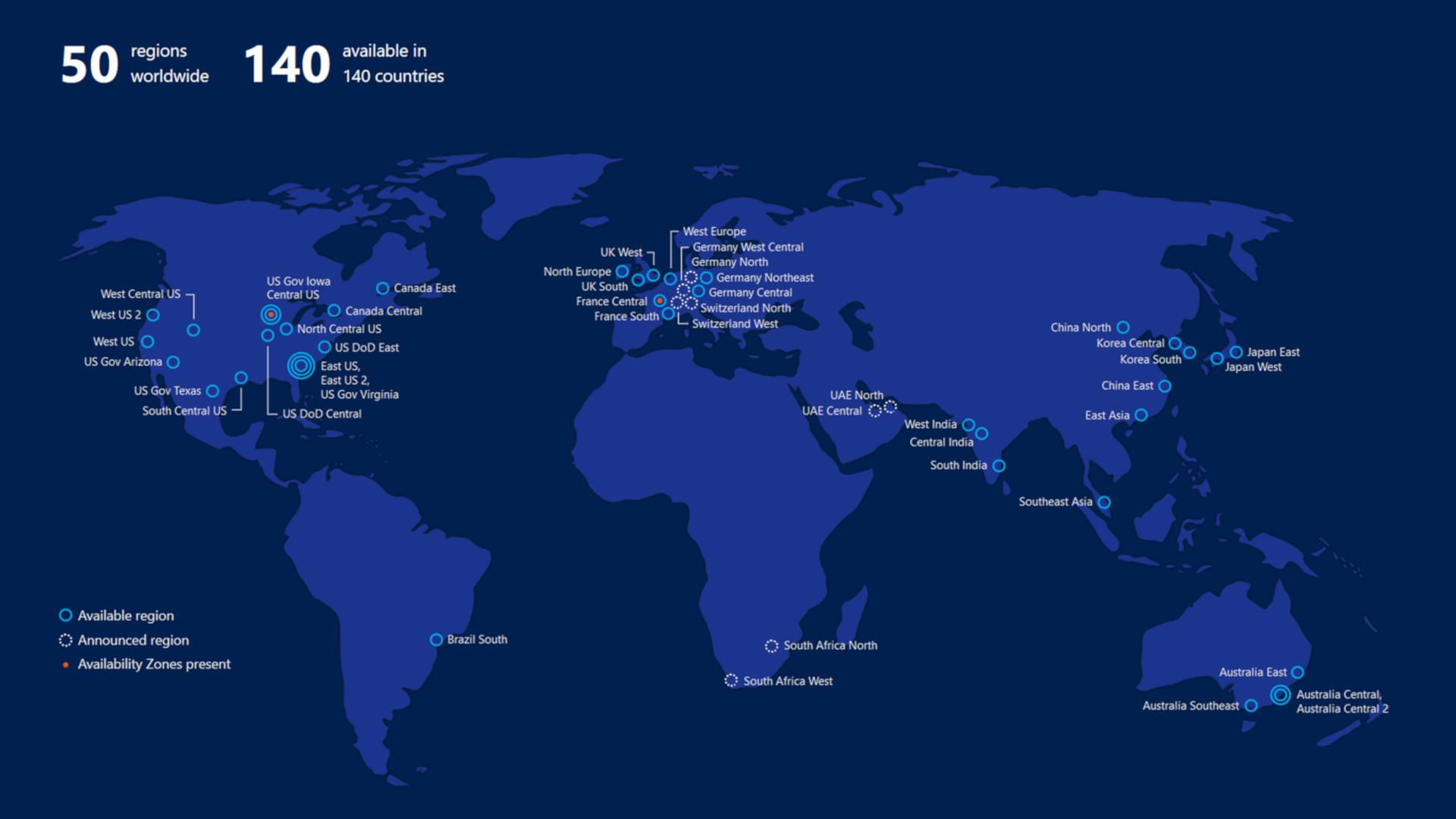There is never a standstill in the cloud. Hyperscalers announce new solutions and products weekly. Microsoft has now developed a high availability solution for Azure regions that is supposed to cushion the failure of entire data centres.
Availability Sets in Azure ensure that virtual machines (VM) of the same Availability Set are split across multiple Fault and Update Domains. A fault domain is an isolated infrastructure consisting of racks, compute, network and power. VMs are thus sequentially distributed to several fault domains. If a VM fails, another VM in the next fault domain takes over. The same applies to update domains. All VMs within an update domain are booted simultaneously during patching. The strategy here is to divide the VMs, which collectively represent a cloud service, into different Availability Sets with Fault and Update Domains.
 Diagram: Azure High Availability
Diagram: Azure High Availability
With Availability Zones, Microsoft extends the Azure portfolio to protect a cloud service from a data centre outage. This is achieved by isolating entire data centres. Each data centre corresponds to an Availability Zone. Three of these are required as a minimum within a region. In the application architecture, care is taken to divide the resources used (VMs, storage, public IPs, load balancers, etc.) into individual Availability Zones. The special feature here is that only very low latencies occur in the Availability Zones. This does not affect the cloud service. Before Availability Zones existed, availability had to be realised via regions, which was only possible asynchronously due to the high latencies between the regions. Availability Zones increase availability to 99.99 %. Provided you use at least two VMs and distribute them to different zones. Currently, this solution is only available in the Central US and France Central regions. East US 2, West Europe and Southeast Asia are in the preview phase.
 Azure regions - source Microsoft
Azure regions - source Microsoft
Source: https://azure.microsoft.com/en-us/features/resiliency/